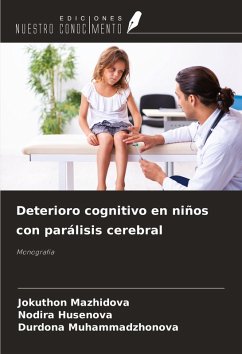
Cognitive impairment in children with cerebral palsy
Monograph
Versandkostenfrei!
Versandfertig in 6-10 Tagen
25,99 €
inkl. MwSt.

PAYBACK Punkte
13 °P sammeln!
Cerebral palsy is a pathology with known developmental factors and established diagnostic algorithms. Even though there are many research works on the subject, the theory of sensitive dysafferentation has an unsubstantiated clinical and instrumental basis, which most often relies on statistical data. It is worth noting the change in the course of recovery over the last two decades: methods have been invented that allow us to assess quality of life indicators, thanks to which we are able to tailor individualized treatment for each patient with greater speed and accuracy. Since there is a high i...
Cerebral palsy is a pathology with known developmental factors and established diagnostic algorithms. Even though there are many research works on the subject, the theory of sensitive dysafferentation has an unsubstantiated clinical and instrumental basis, which most often relies on statistical data. It is worth noting the change in the course of recovery over the last two decades: methods have been invented that allow us to assess quality of life indicators, thanks to which we are able to tailor individualized treatment for each patient with greater speed and accuracy. Since there is a high incidence of CKD, the main forces are aimed at forming courses of early diagnosis, as well as prevention of this pathology.












